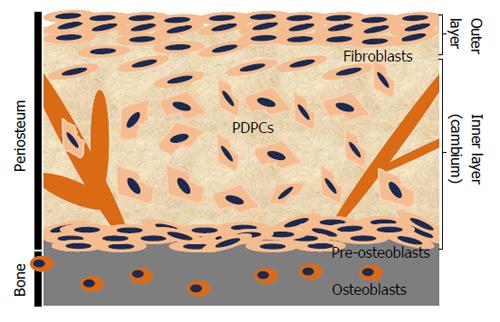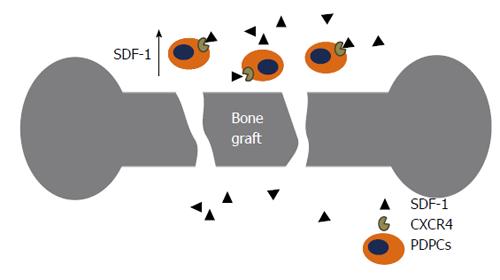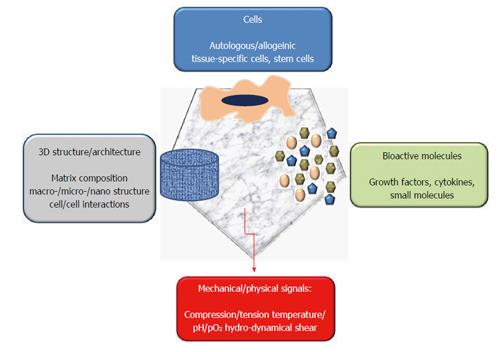Copyright
©2014 Baishideng Publishing Group Inc.
World J Stem Cells. Jul 26, 2014; 6(3): 266-277
Published online Jul 26, 2014. doi: 10.4252/wjsc.v6.i3.266
Published online Jul 26, 2014. doi: 10.4252/wjsc.v6.i3.266
Figure 1 Schematic representation of periosteum as well as the distribution of cell populations and extracellular matrix that contribute to its biological and mechanical properties.
PDPCs: Periosteum-derived precursor cells.
Figure 2 Stromal cell-derived factor 1/chemochine receptor 4 can recruit mesenchymal stem cells to induce fracture repair in skeletal healing.
Stromal cell-derived factor 1 (SDF-1) is expresses on the periosteum of the bone graft and recruited chemochine (C-X-C motif) receptor 4 (CXCR4) expressing mesenchymal stem cells in the acute phase of bone repair. PDPCs: Periosteum-derived precursor cells.
Figure 3 Interactive ‘‘diamond’’ concept of Tissue Engineering and Regenerative Medicine suggests that in addition to cell type, 3D dimensional structure/architecture, mechanical/physical signals, and bioactive factors in the environment are critical and act in concert to direct tissue repair and regeneration.
Cell activity is dynamically regulated by the other key cornerstones of the diamond.
- Citation: Ferretti C, Mattioli-Belmonte M. Periosteum derived stem cells for regenerative medicine proposals: Boosting current knowledge. World J Stem Cells 2014; 6(3): 266-277
- URL: https://www.wjgnet.com/1948-0210/full/v6/i3/266.htm
- DOI: https://dx.doi.org/10.4252/wjsc.v6.i3.266











